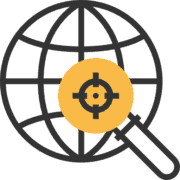We are finding that more and more baby boomers are interested in and have questions about long term travel. Whether to do it, How to do it and How to get started. We will be publishing articles on the blog that deal directly with you and your questions. Everyone’s first question to us is always “How Do I Become A Digital Nomad?” We want to help open the eyes of people of all ages to the health benefits that they can derive from a life of travel and exploration. We want to answer that question with the basics. How do I use long term travel to stay on the road full time? How to Become A Digital Nomad starts with the following steps.
Finding the inner strength to change a person’s life at the age of 65+ can be more than a little challenging. When people are in their golden years and they still have the urge to see and do more, they are looking for a way to start. This is true of people at any age. You want to know how to do it and how to start. There is a lot of writing about ‘how to sell all you own, become a nomad and use long term travel to see the world‘ if you are still young. There is very little that discusses the problems and issues that people over 60 years old might face.
We tried to make our information more generic that would be applicable to expats of any age.
Considerations Before Starting Your Long Term Travel
1. Cashing Out
 The decision to do this is not something that anyone should take lightly. There are a couple of options on how to “cash out” that anyone can use. The first is the total liquidation. Take everything you have and place them in three piles. 1) What you want your family to have 2) Anything that you can’t bear to part with and 3) The items that can be gotten rid of through Craigslist or for us we found it to be better to distribute a lot of material possessions to Good Will and other charities. The money you will receive will not be much if you sell, but you can get a hefty tax voucher for anything you donate. The personal items and items you can’t bear to part with can usually be left with a family member for safe-keeping.
The decision to do this is not something that anyone should take lightly. There are a couple of options on how to “cash out” that anyone can use. The first is the total liquidation. Take everything you have and place them in three piles. 1) What you want your family to have 2) Anything that you can’t bear to part with and 3) The items that can be gotten rid of through Craigslist or for us we found it to be better to distribute a lot of material possessions to Good Will and other charities. The money you will receive will not be much if you sell, but you can get a hefty tax voucher for anything you donate. The personal items and items you can’t bear to part with can usually be left with a family member for safe-keeping.
The second option is the one we use. We travel more than the average senior since we have a business which demands that we travel. We have our personal and ‘can’t bear to part with’ items as well as our clothing in a small climate controlled storage unit in Las Vegas. We travel to different areas of the world for work and on one trip we may need tropical clothing and the next trip clothes for a winter climate may be required. For that reason, we still use Las Vegas as a hub and are finding ourselves going back to the U.S. more often between jobs. We try to set up jobs in a geographical area that will last around 3 to 6 months. We will go to LV and get the clothes and materials we need for that location and climate and then come back there to do post-processing and prepare for our next job cycle.
If you plan to relocate for the rest of your life then option one would be the logical choice. However, we would caution you by saying that 90% of the seniors at some point will return to their home countries due to medical issues as they get past the 75 or older age group. For that reason, the second option may be better since it will allow you to retain a great many things such as family heirlooms and any specialty household goods.
2. Family
 The first and foremost problem we had was how to get the family to deal with the fact that we were not going to be in the same country as they were anymore. To get them to understand the fact that we were still strong enough and wanted to make this lifestyle change. Most thought that it was just an over-60-late-in-life-crisis-thing. Not until we had Laurel’s son come to the house and pick up the things he wanted and the things we had not sold did he really believe that we were doing this.
The first and foremost problem we had was how to get the family to deal with the fact that we were not going to be in the same country as they were anymore. To get them to understand the fact that we were still strong enough and wanted to make this lifestyle change. Most thought that it was just an over-60-late-in-life-crisis-thing. Not until we had Laurel’s son come to the house and pick up the things he wanted and the things we had not sold did he really believe that we were doing this.
3. Communication
 Setting up a reliable form of communication for your away-time is crucial. You will have to be in touch with friends and family wherever you are. This is for both your and their peace of mind. There a number of options to use. When we left home we kept a good world calling and texting program with TMobile. The cost was around $90 a month and also provided us a WiFi hotspot in most countries with the plan. The problem was it cost $1080 a year. Since we rarely called anyone on the phone and everywhere has free wifi we chose another option. Skype Calling (on smartphone, tablet or laptop) for a few cents a minute or Skype Visual Chat was the best for us. The Visual Chat is free and you get to SEE and TALK to people. Another option is to get an unlocked GSM phone. You then pick up a cheap sim card at the airport of any country you visit for phone service in that country. Some plans also have wifi.
Setting up a reliable form of communication for your away-time is crucial. You will have to be in touch with friends and family wherever you are. This is for both your and their peace of mind. There a number of options to use. When we left home we kept a good world calling and texting program with TMobile. The cost was around $90 a month and also provided us a WiFi hotspot in most countries with the plan. The problem was it cost $1080 a year. Since we rarely called anyone on the phone and everywhere has free wifi we chose another option. Skype Calling (on smartphone, tablet or laptop) for a few cents a minute or Skype Visual Chat was the best for us. The Visual Chat is free and you get to SEE and TALK to people. Another option is to get an unlocked GSM phone. You then pick up a cheap sim card at the airport of any country you visit for phone service in that country. Some plans also have wifi.
4. Medical Care
 The next thing that many people will have to deal with is possible health issues they already have. This can make the dream more difficult or impossible depending on each person and their situation. For people with even moderate health problems, the dream of long-term travel may have to be cut back to a more conventional short-term travel then return home. This can cause a huge strain financially and could easily kill the dream. Everyone knows what their level of health is before committing to long term travel. However, you should still make a trip to your personal doctor for one last complete checkup. This may be the last one of these you will have depending on the areas of the world you choose to travel in.
The next thing that many people will have to deal with is possible health issues they already have. This can make the dream more difficult or impossible depending on each person and their situation. For people with even moderate health problems, the dream of long-term travel may have to be cut back to a more conventional short-term travel then return home. This can cause a huge strain financially and could easily kill the dream. Everyone knows what their level of health is before committing to long term travel. However, you should still make a trip to your personal doctor for one last complete checkup. This may be the last one of these you will have depending on the areas of the world you choose to travel in.
A second thing that we are asked questions about is what to do about vaccinations. There are a couple of major ones that you may want to consider — Rabies, Tetanus, and Yellow Fever are the main ones. The first two are a good preventative measure. The second is dependant on where you are going to visit. Should you visit certain countries especially in Africa you will have to get the Yellow Fever vaccination before you leave or before your return. This is a requirement in order to re-enter most countries. Should you not plan to visit the affected countries it would not be necessary and you could easily get by with the first two.
Many people take Malaria tablets and that can be an option. Personally, we have not a problem not taking them. Another common problem is Dengue Fever in SE Asia but that is another issue.
Lastly, this a requirement for people of any age, maintaining hydration. In many climates, you will be losing a lot more body fluids than you ever have before. There are some good fluid replacement avenues, in S.E. Asia even the locals who are used to the climate put Royal D in bottles of water and drink it daily to replenish electrolytes. This is a must for you when you are in these hot climates.
5. Insurance
 You will no longer be able to use your standard medical insurance while abroad. This is your next consideration. There are two types of insurance that you can have while abroad. There are normal policies that will cover you pretty much from head to toe but, in most cases, the health standards will not meet your expectations. There are some countries, Thailand for example, that have pretty high standards of medical care but most other countries do not.
You will no longer be able to use your standard medical insurance while abroad. This is your next consideration. There are two types of insurance that you can have while abroad. There are normal policies that will cover you pretty much from head to toe but, in most cases, the health standards will not meet your expectations. There are some countries, Thailand for example, that have pretty high standards of medical care but most other countries do not.
The second type of policy, and the one that we use is a combination accidental injury and relocation coverage combination. This will cover us in the case of any emergency that arises and also will relocate us to a country with better medical standards. These policies are very inexpensive through U.S. companies. Ours only costs around $100 a year for both of us. This type of policy will give you the peace of mind that you need. It can also be used anytime an activity requires that you have insurance to participate.
Medication in most parts of the world only cost around 15 to 20 percent of the price in the U.S. and Europe for the same drug. Almost all can be purchased at the pharmacy without a prescription. Should you have a major illness the cost of flying to a country with good care is far cheaper than the month to month cost for complete care insurance. Or if you are in a country like Thailand you can buy good coverage for a very low price.
Long Term Travel Preparations
6. Packing
 I guess the hardest part that we had was how to downsize and get on our first flight. There is an article in our blog You Can’t Pack The Kitchen Sink where we discuss what we are taking and how we have set ourselves up for the start of the trip. To say that we chose the wrong gear and that we over packed would be a gross understatement. Too many clothes, luggage choice that was nice but totally wrong, and to much total weight for frequent airline travel. Here are some photos of what we have downsized too after the first 5 months. We actually have gone from 2 bags each to 3 but are able to have much more with us and still fly without issues. We are able to get on the plane in almost all cases without checking any baggage. This can be a good idea if at all possible, in many cases even if flying the same carrier they may not be able to check your bag to your final destination if it is on a different route. That means if you land in Kuala Lumpur on Air Asia you will have to go through customs to enter the country, get your baggage, go back through the same airport and recheck it. Should you have a long layover you will have to wait until just before flight time to recheck the bags and go back through customs. Long-term traveling our way allows you to just take your bags with you and stay in the airport with maybe just the need to change terminals.
I guess the hardest part that we had was how to downsize and get on our first flight. There is an article in our blog You Can’t Pack The Kitchen Sink where we discuss what we are taking and how we have set ourselves up for the start of the trip. To say that we chose the wrong gear and that we over packed would be a gross understatement. Too many clothes, luggage choice that was nice but totally wrong, and to much total weight for frequent airline travel. Here are some photos of what we have downsized too after the first 5 months. We actually have gone from 2 bags each to 3 but are able to have much more with us and still fly without issues. We are able to get on the plane in almost all cases without checking any baggage. This can be a good idea if at all possible, in many cases even if flying the same carrier they may not be able to check your bag to your final destination if it is on a different route. That means if you land in Kuala Lumpur on Air Asia you will have to go through customs to enter the country, get your baggage, go back through the same airport and recheck it. Should you have a long layover you will have to wait until just before flight time to recheck the bags and go back through customs. Long-term traveling our way allows you to just take your bags with you and stay in the airport with maybe just the need to change terminals.
7. Picking Destinations
 Choosing the area of the world that is right for you is about the same for new travelers of any age. That is usually most dependant on what your budget is. However, there are some choices that are better than others in each climate. For the real budget travelers, the S.E. Asia countries are the best choice but the climate differences between Thailand, Myanmar, and Malaysia for example versus that of Bali is staggering during the hot season. Bali offers you, as a senior, the chance to live there full time. The climate is great and the cost of living is very good.
Choosing the area of the world that is right for you is about the same for new travelers of any age. That is usually most dependant on what your budget is. However, there are some choices that are better than others in each climate. For the real budget travelers, the S.E. Asia countries are the best choice but the climate differences between Thailand, Myanmar, and Malaysia for example versus that of Bali is staggering during the hot season. Bali offers you, as a senior, the chance to live there full time. The climate is great and the cost of living is very good.
The cost of living is very high in European countries like Germany, Italy, and France. However, you can live on a pension very comfortably in the Eastern European countries like Romania, Bulgaria, and Serbia. The Eastern European countries are easy to stay in full time. but you are only allowed 90 days in each without a visa and they are a cheap bus or train ride from each other.
The Central American countries are financially attractive but climate and crime leave us inclined to stay away from them in favor of Asia.
8. Handling Finances
 As a senior, you will most likely have social security payments as well as a pension of some kind in most cases. These need to be setup on a direct deposit basis since you will no longer be able to receive a check. We use Schwab Investment Bank for all of our needs. Their ATM cards work well in every country and they offer the luxury of refunding all of the ATM fees at the end of each month. That is usually around $25 a month which is not a great deal but and extra $300 a year buys airfare tickets.
As a senior, you will most likely have social security payments as well as a pension of some kind in most cases. These need to be setup on a direct deposit basis since you will no longer be able to receive a check. We use Schwab Investment Bank for all of our needs. Their ATM cards work well in every country and they offer the luxury of refunding all of the ATM fees at the end of each month. That is usually around $25 a month which is not a great deal but and extra $300 a year buys airfare tickets.
You will always be looking for free airline tickets and the best way to get them is with air miles. Get an air miles credit card and use that card to pay for everything that you can such as food, rooms, and all tickets. Unfortunately, in many of the Asian countries, hotels etc. like to have cash for rooms. Still, over the course of a year, you can easily get several airline tickets free with the miles you build up. Our next article for seniors will be an in-depth guide for using miles to get tickets.
9. Better Health Through Long Term Travel
 Finally, as you get started on the road you may find that there are a number of things you will have to do. We have already discussed hydration, the next is food choices. People’s diets in many countries are determined by financial limitations as opposed to healthy food choices.
Finally, as you get started on the road you may find that there are a number of things you will have to do. We have already discussed hydration, the next is food choices. People’s diets in many countries are determined by financial limitations as opposed to healthy food choices.
The food in Asian countries will be heavy in rice and vegetables with a small amount of protein other than the fish. The food in Mongolia is nearly 100% meat or products made from animal milk with little to no vegetables or fruits. When you practice a long term travel strategy you will want to eat locally for financial reasons as well to sample all of the local cuisines. It will be your responsibility to be aware of the types of foods you will be getting in the local food and finding ways to supplement the foods you will need to also maintain a more balanced diet.
Exercise is just going to become a part of your life more than when you were in your previous home. You will not have personal transportation in most cases and you will just find yourself walking more and more. When we lived in the U.S. we would find ourselves getting the car out just to go a few blocks to the market. Now we walk those few blocks to the markets and back with our purchases. We rarely cook so we are dependent on eating out and in doing this you have to choose the spots you will want to eat in. The way to choose a good place to eat is to determine which places are most frequented by the locals. They know where the best food is and if they all go there to eat it is a good bet that the food is both good and safe for you.
This is only a theory but we feel that the food products in developed countries are genetically engineered. Animals are given growth hormones and most plants are genetically engineered to grow bigger and faster. The foods you are eating also make you grow faster and lead to overweight issues. There is so much sugar in all types of foods you eat that you can’t help but be overweight. Actually, the food we eat now tastes better and we believe is much healthier for us. The information below should bear this out for you.
When we left home for our first trip were we well past overweight. I am 6 feet and weighed 325lbs or around 160 Kilos, I now weigh 190 lbs or 90 kilos. That is a loss of around 135 lbs. Laurel has lost about 80 lbs now. Once we left America, we walked pretty much everywhere we went. The drop in weight has had a major impact on our cardio health as well as joints in our legs. Carrying around an extra 135 lbs will ruin your knees. In the last year, we have climbed Mt Phousy in Laos, walked the Great Wall of China, trekked Mongolia and climbed through the temples of Angkor Wat. We are now in Nepal and about to paraglide in the Himalayas as well as trek Anapurna. All of this has been possible because of our choice to leave home and travel.
Conclusions
This is not a lifestyle for a lot of people our age but for us it has proven to be a good choice. We see the world one step at a time. We live a life that many people wish they could live and are just afraid to take the first step. For seniors, we are all sitting on a ticking “time” bomb and that is just a reality. For many a cruise, each year and playing golf etc are enough to complete their lives.
Are you one of the people who feel that there is something missing and that you find yourselves wanting more? Are you a younger person who does not want to become a part of the 9 to 5 group and live a structured life, do you want to see and experience the world now and not later. Perhaps a life of long term travel or at least one combined with your current life might give you that little something extra. We hope these are helpful and in some way answer the question you first asked: “How Do I Become A Digital Nomad”.
Should you have questions please ask them in the comments section below or contact us directly at info@aroadtotravel.com
